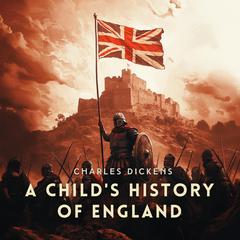 Play Audiobook Sample
Play Audiobook Sample
A House to Let Audiobook
 Play Audiobook Sample
Play Audiobook Sample
Quick Stats About this Audiobook
Total Audiobook Chapters:
Longest Chapter Length:
Shortest Chapter Length:
Average Chapter Length:
Audiobooks by this Author:
Publisher Description
"A House to Let" is a short story by Charles Dickens, Wilkie Collins, Elizabeth Gaskell and Adelaide Anne Procter. It was originally published in 1858 in the Christmas edition of Dickens' Household Words magazine. Collins wrote the introduction and collaborated with Dickens on the second story and ending, while Gaskell and Proctor wrote the remainder. When elderly Sophonisba moves to London for a change of tone, she notices something unusual about the supposedly unoccupied house to let across the street. She entreaties her friends and confidants to investigate the matter, and they return with a collection of tales of previous occupants, but what exactly is the secret of the mysterious house to let? Narrated by Michael Ward
Download and start listening now!
A House to Let Listener Reviews
Be the first to write a review about this audiobook!
About the Authors
Charles Dickens (1812–1870) was born in Landport, Portsmouth, England, the second of eight children in a family continually plagued by debt. A legacy brought release from the nightmare of debtors’ prison and child labor and afforded him a few years of formal schooling. He worked as an attorney’s clerk and newspaper reporter until his early writings brought him the amazing success that was to be his for the remainder of his life. He was the most popular English novelist of the Victorian era, and he remains popular, responsible for some of English literature’s most iconic characters.
Wilkie Collins (1824–1889) was an English novelist. He studied law and was admitted to the bar but never practiced. Instead, he devoted his time to writing and is best known for his novels The Woman in White, No Name, Armadale, and The Moonstone, which has been called the finest detective story ever written. A number of his works were collaborations with his close friend, Charles Dickens. The Woman in White so gripped the imagination of the world that Wilkie Collins had his own tombstone inscribed: “Author of The Woman in White.”
Elizabeth Gaskell (1810–1865) was an English novelist and short-story writer born in London and raised in Knutsford, Cheshire, which became the model for village settings in her novels. In 1832 she married William Gaskell, a Unitarian minister. Her first novel, Mary Barton, published in 1848, was immensely popular and brought her to the attention of Charles Dickens, who solicited her work for his periodical, Household Words, for which she wrote the series subsequently reprinted as Cranford.























